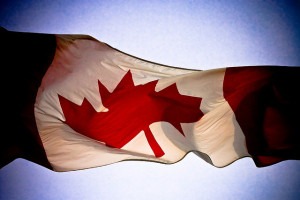Business travel in Canada is a growing industry which boosts jobs and rakes in billions in tax revenue.
A comprehensive study recently revealed just how significant business travel is to Canada, considering 70% of travel is within a 160km range, and most travel involves one-day trips.
Last week the Global Business Travel Association had a 3 day conference in Toronto, and vice-president or research, John Bates presented recent findings of a study by Intercontinental Hotels Group (IHG) which showed business travel spending in Canada reached $23.5 billion in 2013, which was a 1.5% slice of the GDP.
The study focused on business trips within Canada, along with the portion of international travel taking place, whether to the United States or overseas, and excluded leisure travel.
Despite lower fuel prices and the lower Canadian dollar, continued growth is still forecast for the business travel industry in 2015.
Bates described the multiplier effect which happens to the business travel spending, saying that over a few cycles the government ends up with the money, turning into $27.3 billion in GDP. This means that each dollar spent on business travel actually becomes $1.16 in GDP.
All levels of government benefit from business travel, and close to $8 billion of local, provincial, and federal taxes were generated solely by business travel in 2013 alone.
Even more important is the number of jobs which the business travel sector supports, and in 2013 business travellers went on 35.8m million trips, 93% of these domestic trips, which generated $8.6 billion in taxes, $16.9 billion in wages, and supported 434,000 jobs.
Bates used the analogy of the “Girl Guide cookie economy”, explaining that there’s obviously more involved than just the $5 cost and the delicious taste.
This was an average of $656 per trip, including $131 for accommodation, $100 for food $75 for airfare, and $8 in entertainment. 80% of these trips were taken by car.
60% of all business trips were to or within Quebec or Ontario, with Montreal and Toronto being the most popular destinations.
While not surprising, 78% of business travellers came from the U.S, 11% from Europe, and 7% from Asia. What was surprising, was that 75% of all business travel was for single day trips. Only 7% of this travel was done by aircraft, while the rest was by car, truck, bus, or train. The majority was done within 160km of the business travellers’ homes.
Men represented 68% of business travellers, and the average age was 45. The fact is, business travel positively impacts the economy, and nothing replaces face-to-face interactions for business travellers, so it comes as no surprise that the business travel industry has had such a large impact on Canada’s economy.
Mr Bates also said that travel industry suppliers could better cater to day travellers, by perhaps providing a more comfortable place for people to meet customers outside of the typical office environment.






